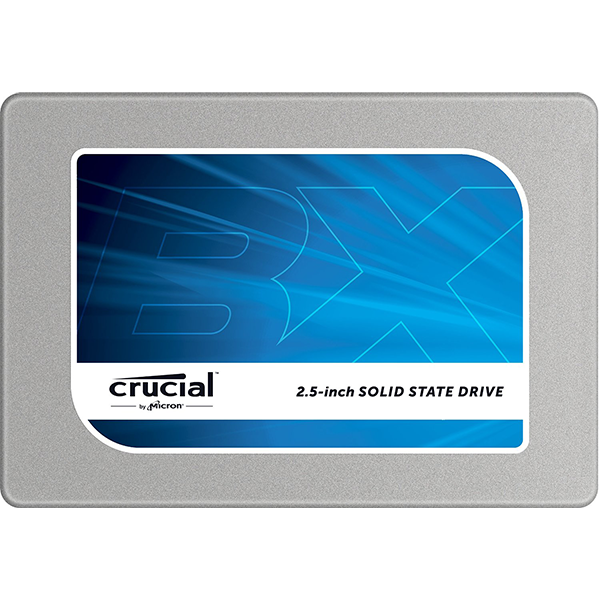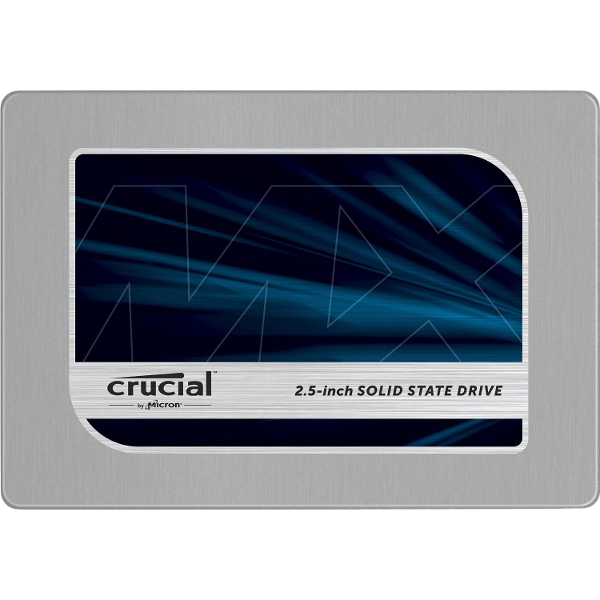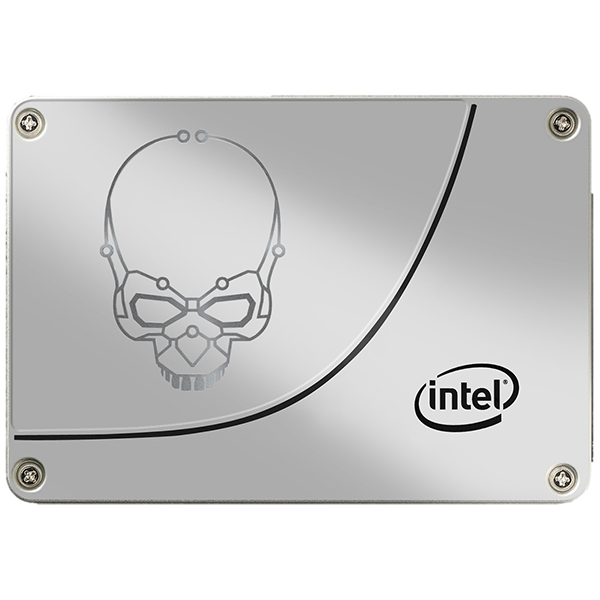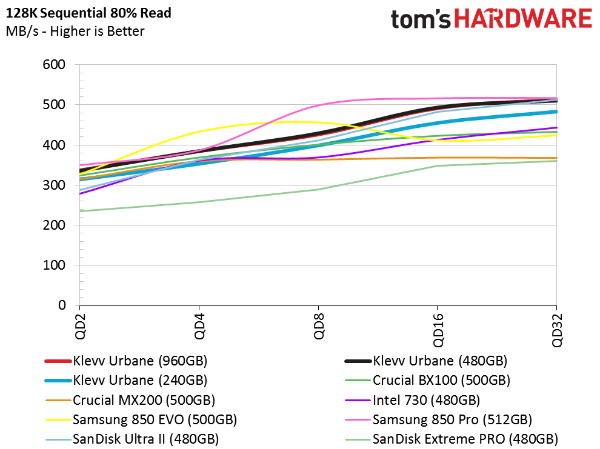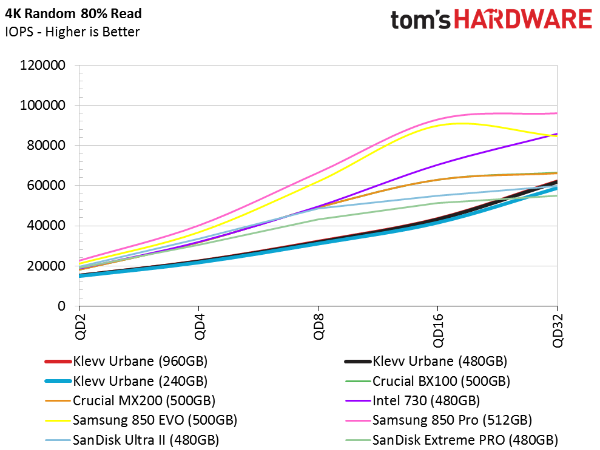Klevv Urbane SSD Review
Why you can trust Tom's Hardware
Performance Testing
Data Type Performance Comparison & SLC Cache
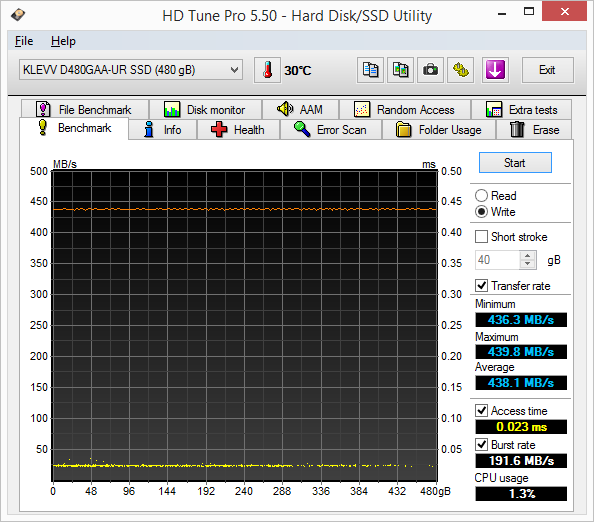
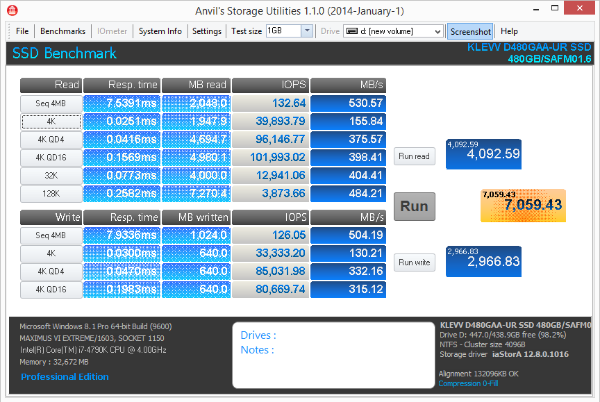
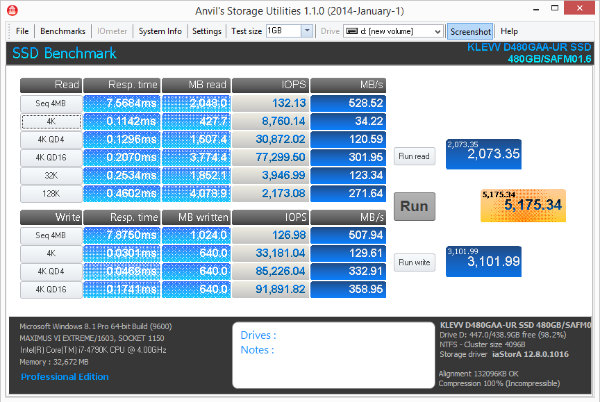
The Phison S10 can be programmed to support an emulated SLC buffer, but we only see that feature used with TLC NAND flash, which requires the extra kick to increase performance. MLC flash doesn't need an SLC buffer because the flash already sustains quick writes throughout the entire LBA range.
Unlike the old SandForce controllers that slow down when they write incompressible information, the S10 takes a hit when it reads small blocks of data.
Sequential Read
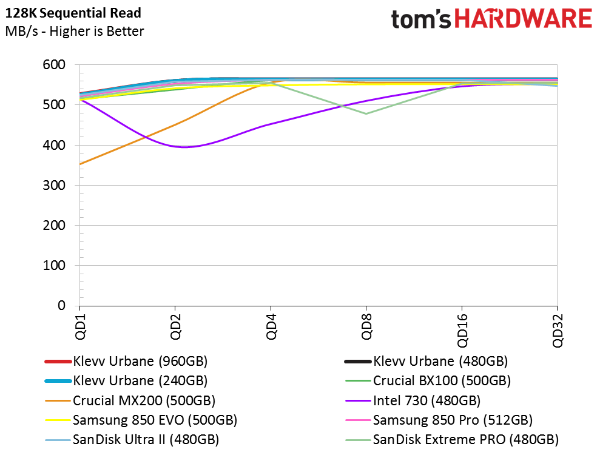
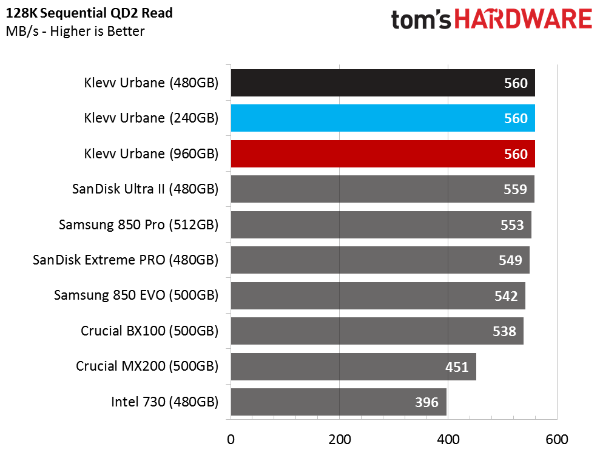
Zotac's Premium Edition SSD uses the same Phison S10 controller as the Klevv Urbane. In that review, our charts included other low-cost SSDs. But because the Klevv Urbane uses premium Toshiba flash, we wanted to see how Phison's new firmware and the faster NAND compared to higher-performing SATA-based drives.
The tests on this page employ incompressible data, but that doesn't the Urbane drives much. After all, its S10 controller is one of the fastest at reading large-block data.
Although all three capacities were tested, only the 480GB model is directly comparable to the other products. With that said, even the 240GB Urbane performs well compared to the higher-capacity drives on our charts.
Sequential Write
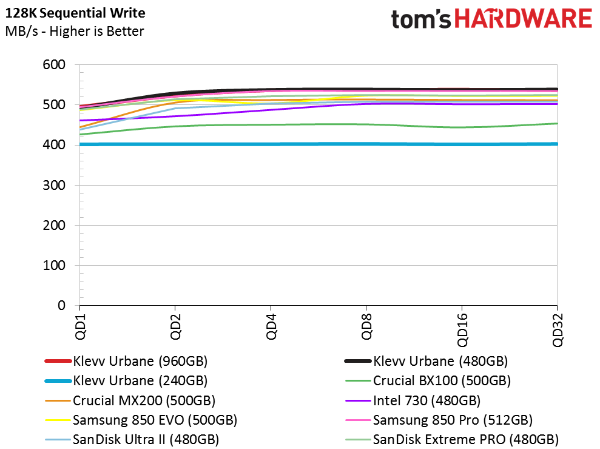
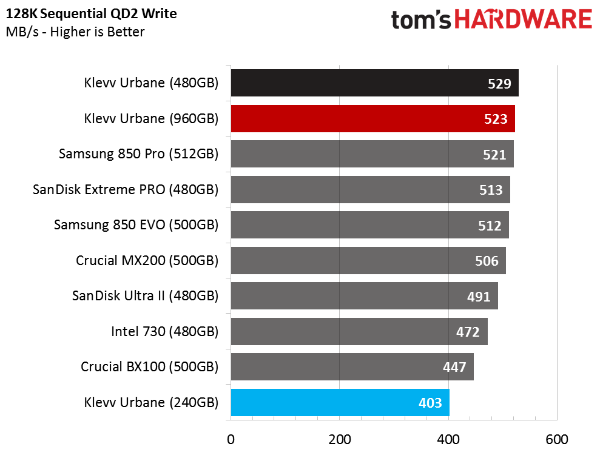
The two largest Urbanes top the sequential write test, partly due to the version 1.6 firmware improving performance. This is important to note because many enthusiasts looked at and dismissed Phison S10-based products in the past. Now, they're more viable.
As a result of less interleaving than the higher-capacity models, Klevv's 240GB Urbane falls to the bottom of our sequential write chart. This is normal for lower-capacity SSDs. Klevv claims the 240GB drive can do 390 MB/s, but we managed to pull a little more performance from the drive.
Get Tom's Hardware's best news and in-depth reviews, straight to your inbox.
Random Read
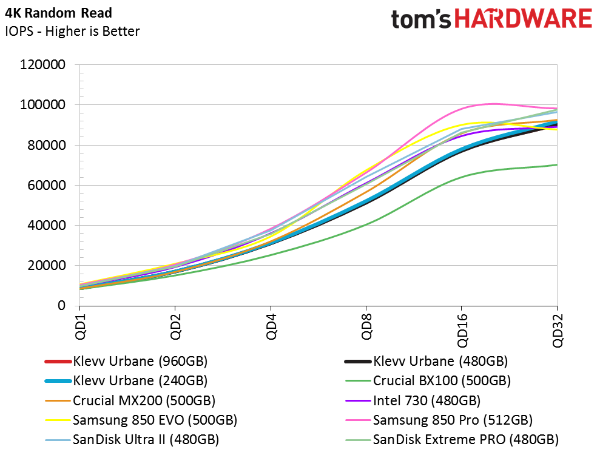
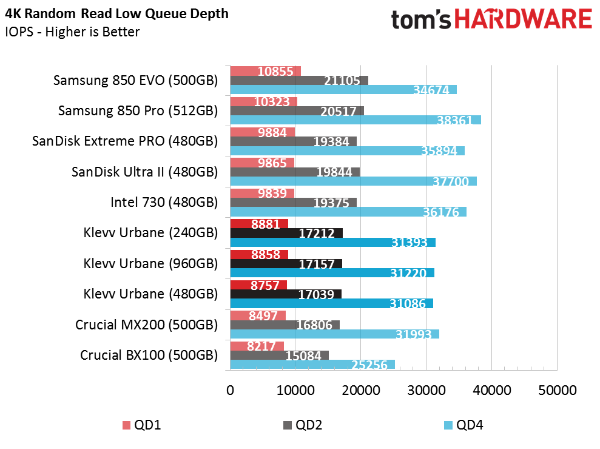

I'm genuinely surprised that Klevv's Urbane could not deliver 10,000 or more random read IOPS at a queue depth of one. The 10,000 IOPS mark separates mainstream SSDs from high-performance ones in our evaluations. The low-cost Zotac Premium Edition drives we tested last month crossed that barrier, but Klevv's Urbane does not. It still performs well though, scaling up through a queue depth of 32 (the highest you can go across the SATA interface).
Random Write
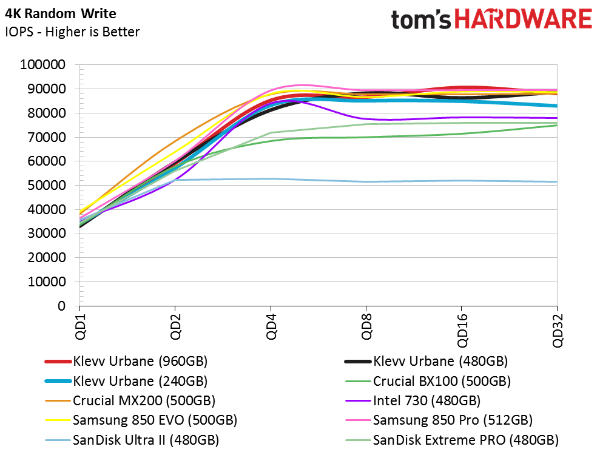
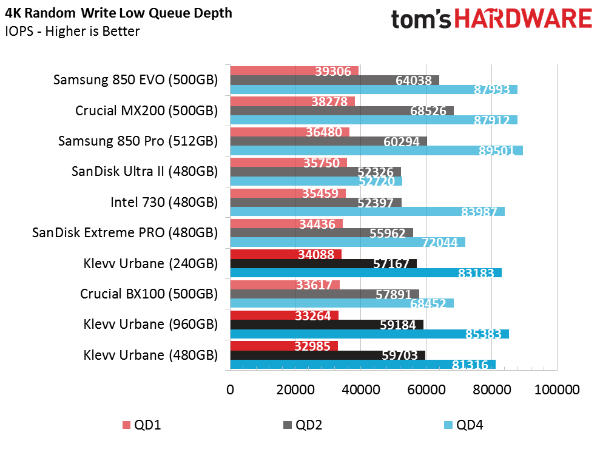
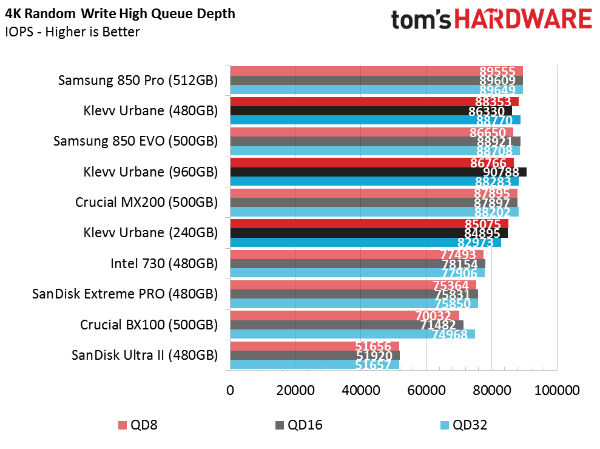
Although it achieves solid 4KB random writes, the Urbane doesn't fare as well in this group of high-performance drives. The line chart is telling, even if these products cluster up, managing nearly identical performance.
80 Percent Sequential Mixed Workload
Our mixed workload testing is described in detail here, and our steady state tests are described here.
Several of the drives in today's charts, even the high-performance models, struggle with mixed data workloads.
SATA is half-duplex, meaning it can only read or write at one time. Command queuing was introduced to reshuffle the operations, thereby improving performance. And this worked well enough in the world of mechanical storage. But it quickly became a real-world bottleneck with flash.
When we move 128KB blocks of data sequentially, Klevv's Urbane drives perform well. Even the small 240GB model.
80 Percent Random Mixed Workload
Small blocks of random data aren't as forgiving, and the Urbanes fall to the bottom of the field. In fact, they come up about 10,000 IOPS short of Zotac's Premium Edition drives at a queue depth of 32. Both SSDs were tested with the same 1.6 firmware, yet they still differ in some other way.
Sequential Steady State
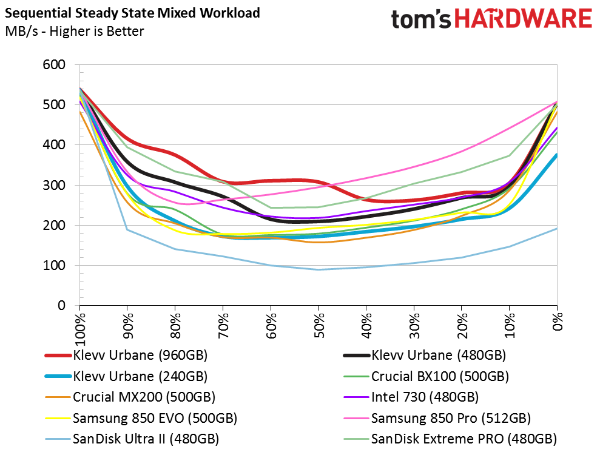
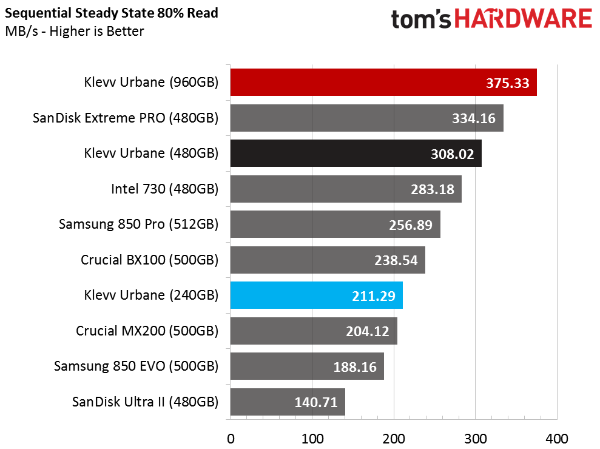
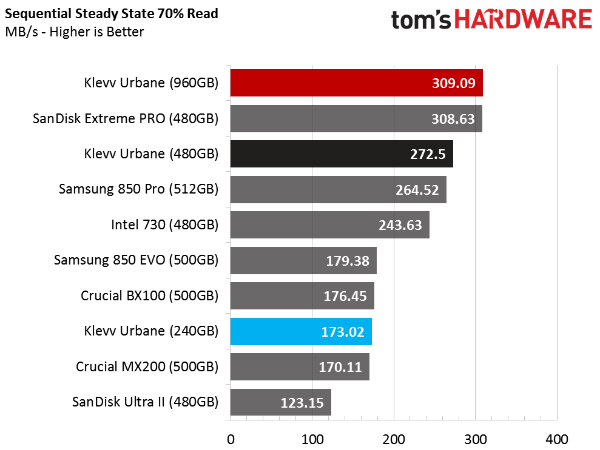
Klevv's high sequential performance carries over to the steady state test. This workload doesn't mimic what most of you do, but it means a great deal to professionals manipulating large video files. The 480GB Urbane performs well against products of similar capacity in the 80 percent read (client) and 70 percent read (workstation) blends. To keep your system performing at high speeds, you should run these workloads on a secondary drive rather than your primary operating system SSD.
Random Write Steady State
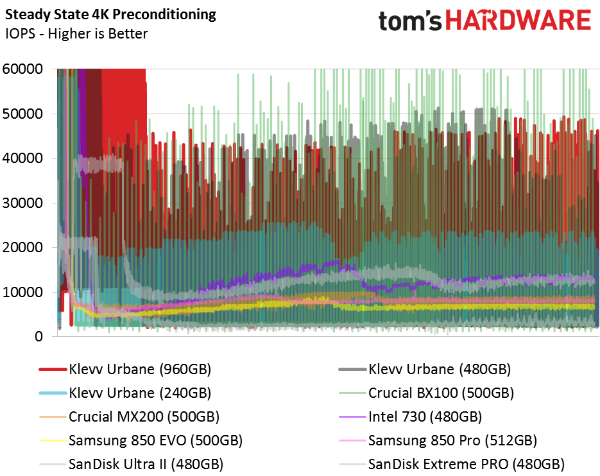
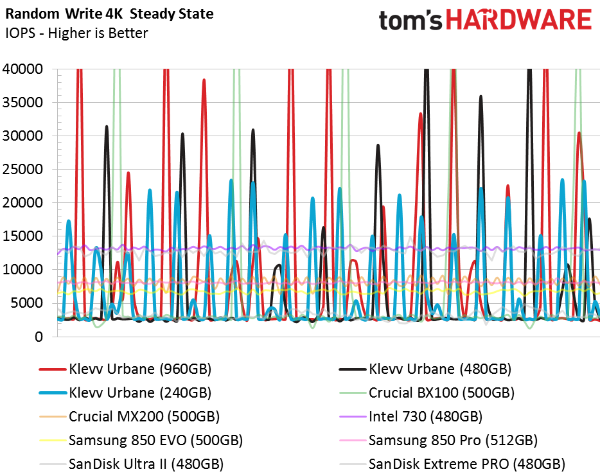
This chart gets difficult to read with so many products, but it's easy to see where the best steady state read performance comes from (that's the purple line, Intel's 480GB SSD 730) and how Klevv's Urbane stacks up against it.
The Urbane drives do attain high peak performance, but are plagued by very low dips as well. Their steady state random write performance is inconsistent, so you won't want to run these SSDs in RAID 0 arrays where the swings get much wider and the performance becomes less predictable.
Current page: Performance Testing
Prev Page Specifications, Pricing, Warranty And Accessories Next Page Real-World Software Performance
Chris Ramseyer was a senior contributing editor for Tom's Hardware. He tested and reviewed consumer storage.
-
MrMilli79 In 'Sequential Steady State', 'Random Write Steady State' and 'Service Time' the Sandisk Extreme Pro is in its own class. Those are some of the most important metrics for pro users. The Extreme Pro is so overlooked. Costs barely more than the 850 EVO and less than the 850 Pro.Reply -
Quixit Are they going to do a "Faker" edition of this too? Because I know that's what I want written on my computer components.Reply -
CRamseyer ReplyAre they going to do a "Faker" edition of this too? Because I know that's what I want written on my computer components.
I saw that. Maybe it means something else in Korean, -
gaaah Sorry since I done learnt myself about NVMe just can't look at a conventional SSD. Conventional SSD's are hodunk.Reply -
Reply
How come the TBW endurance numbers are so high? They don't sound right to me...
Sounds like BS to me also, since this is 15 nm mlc? No way this has such high endurance.
-
Lutfij To be honest, all these tests may be the end all be all criteria for this SSD once their pricing is revealed. As the article culminated, the price of this unit will show itself off in the order of the pack of competitive/premium SSD's. I for one think they might just bump up their warranty period as was the case with XFX and some other brands that offered only 3~ years and bumped them to second tier warranty whereby the device bought second hand could yet benefit from secondary ownership warranty.Reply
